Изучение рациона-пособие-наше. Изучение соответствия энергетической
 Скачать 0.64 Mb. Скачать 0.64 Mb.
|
|
5. Методические и практические рекомендации по изучению соответствия энергетической ценности и нутриентного состава рациона физиологической потребности организма (на английском языке) Methodological and practical recommendations for the study compliance of energy value and nutrient composition of the diet physiological needs of the body The study of the energy value and nutrient composition of the diet of the physiological needs of the body in energy and nutrients is recommended to be carried out, adhering to the following algorithm. 1. Define and evaluate your anthropometric data (height, weight, chest circumference, height and weight, thickness of fat folds). 2. On the basis of scientifically developed standards and taking into account their individual characteristics (sex, age, height, weight, group of physical activity) to determine the theoretically possible total energy consumption of the body, including: - energy consumption of its main exchange; - energy consumption of specific dynamic action of food (10 % of the energy consumption of the main metabolism); - coefficient of physical activity depending on belonging to groups of intensity of work; - unaccounted energy expenditure (5% of total energy expenditure). 3. Taking into account their individual characteristics (age, sex, weight, group of physical activity) and on the basis of scientifically developed standards to determine the daily regulatory need of the body in nutrients: - proteins, fats, carbohydrates; – vitamins; - mineral substances (calcium, magnesium, phosphorus, iron, etc.) 4. Timekeeping-tabular method to determine their real energy consumption for an arbitrarily selected day. It is recommended to choose a school day. 5. Fix the diet and nutrient composition of the diet for the same day. 6. Calculate the nutrient composition and energy value of the diet. On the basis of daily weight of food products, using special reference books and tables, calculate the amount of energy substances (proteins, fats, carbohydrates) received in the body at each meal and for the day as a whole. Calculate the amount of minerals and vitamins received in the body per day [3,4]. 7. To conduct a comparative analysis of the compliance of the energy value of your diet daily energy consumption and recommended individual needs of the body in nutrients: proteins, fats, carbohydrates, minerals, vitamins. 8. Make a conclusion about the nutritional status of your body (according to anthropometry), energy consumption, diet and diet. 9. To develop reasonable recommendations for the correction of energy value, diet and nutrient composition of the diet. Further details on the practical implementation of the work. 4.1. Definition and evaluation of basic anthropometric data your body (nutritional status) To perform this work, it is enough to determine the height, chest circumference, thickness of fat folds, weight and body mass index. Evaluate the results. Measurement of growth Measurement of growth in a medical facility is carried out with a wooden rostomer (Fig.1, a) or a metal anthropometer (Fig. 1,b). Wooden rostomer is a rack up to 2 m with divisions of 0.5 cm, well-fortified on the site. On the rack moves the clutch with a tablet. To determine the growth sitting and has a folding bench, mounted on the platform of the stadiometer. The metal anthropometer consists of four hollow tubes. The tubes are inserted into one another and form a rod 2 m long with millimeter divisions. At the end of the upper tube is fixed coupling with a metal ruler. The second coupling can move freely along the anthropometer rod, it has a cutout through which the divisions applied to the rod are visible. In this coupling line is inserted with the tapered end up.
Figure 1. Measurement of growth standing wooden height chart (a) and the metal anthropometer (b) When measuring the growth of the rostomer in a standing position, you need to straighten your back and during the measurement of growth, touch the vertical bar with four points: the back of the head, shoulder blades, buttocks and heels. The position of the head should be such that the line connecting the outer corner of the eye and the upper edge of the ear is horizontal. The measuring bar is lowered to the crown and pressed against the scale of the rostomer. Then go to the height gauge and take readings from its scale. When measuring growth by anthropometry position of the body is the same as in the measurement of growth height chart. It is necessary to stand with your back to the wall, the anthropometer is installed vertically in front of you. The ruler of the anthropometeris lowered to the apical point of the head, after which the length of the body is determined on the scale. Measuring growth at home 1. Take off your shoes and stand with your back to the wall. 2. Lower your arms along your body, straighten your shoulders, straighten your back. 3. The legs should be straight, heels together. 4. Keep your head straight and look straight ahead. 5. Heels, protruding buttocks, shoulder blades should touch the wall. 6. After taking the desired position, set a flat flat object (Board, ruler) on the top of the head, pressing the hair, as they can add up to 1-2 cm to the growth. 7. At the level of the lower edge of the Board is marked on the wall. 8. The resulting distance from the floor to the mark is measured. Pay attention. Measurement of growth should be carried out in the morning, as in the evening the growth of a person can be reduced by 2-3 cm. This is due to the stay in an upright position and the load on the spine, which causes a decrease in the distance between the vertebrae. Measurement of the circumference of the chest To measure the circumference of the chest, use a conventional centimeter tape. For this study, the circumference of the chest is measured at rest (not on inhalation and not on exhalation). The tape is superimposed on the back of the lower corners of the blades with raised arms. Then the hands are lowered, and the tape, slipping, is at the corners of the blades. In men, the tape should pass in front along the edge of the periwinkle mug (Fig. 2, a), and in women the 4th rib (Fig. 2, b).
Figure 2. Measurement of chest circumference in men (a) and women (b) Measuring the thickness of skin-fat folds When assessing nutritional status is not enough to focus on body weight, as it can be increased due to good muscle development. It is also necessary to determine the thickness of the skin-fat folds. The thickness of the skin-fat foldsis measured using a special device-caliper. The calipometry method is based on the assumption that the increase in subcutaneous adipose tissue is proportional to the increase in the total amount of fat in the body, the measurement accuracy is within 3.5–4%. To obtain comparable data, the caliper (caliper) must have a standard contact surface (20 × 40 mm2), a fission price (0.1 mm) and a constant pressure (10 g/mm2) during the measurement process (Fig. 3, 4). 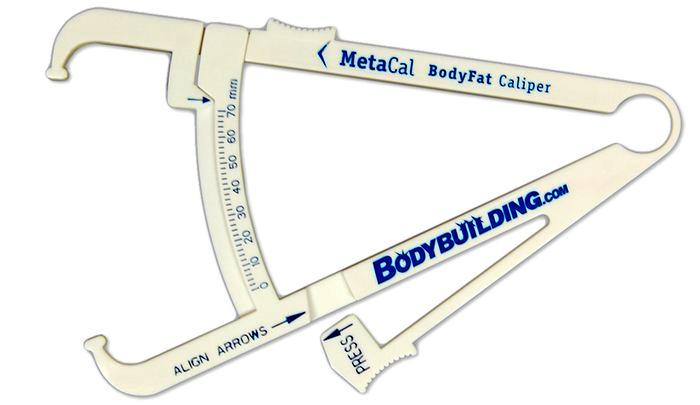 Figure 3. Caliper-a device for measuring the thickness of the skin folds Tips for measuring the thickness of the adipose fold Measure the crease on the left side of the body. Do not use the caliper in areas with damaged or diseased skin. To capture the fold correctly and without difficulty, do it on dry skin, without creams and lotions. Do not take measurements after exercise or sauna, as it is possible to increase the skin fold due to the accumulation of fluid under the skin. Women should not take measurements during menstruation because of the usual weight gain during this period. To obtain correct results, take measurements at the same time of day and using the same caliper. To be engaged by the fingers of the same fold is needed a little experience. In the first measurement, practice until you get the same results (Fig. 4.) Measurement of the thickness of the skin-fat folds produced at several points: 1) along the middle axillary line on the left at the level of the breast nipple; 2) at the navel level on the left midway between the navel and the projection of the outer edge of the rectus abdominis; 3) at the angle of the left shoulder blade. 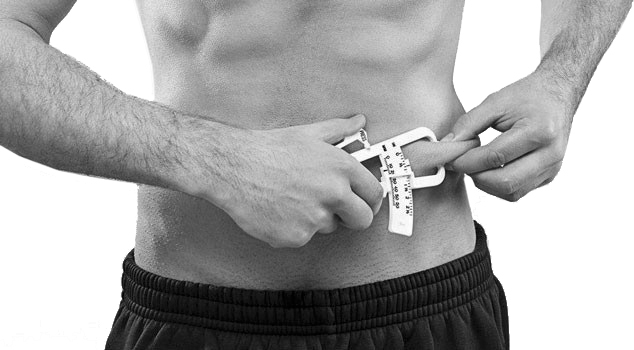 Figure 4. Example of measuring the thickness of the adipose skin fold When measuring, the skin-fat fold between the thumb and index finger is clamped 1 cm above the place of applying the caliper legs. With normal fatness, the thickness of the skin-fat fold in men does not exceed 15 mm, and in women-25 mm. Calculate the average thickness of the skin-fat folds from measurements at 3-4 points. An estimate of the thickness of the skin-fat fold is presented in table 3. Depending on the degree of fat deposition, the adult population is divided into 5 groups (table 3): Group I: normal (average) fatness, when the deviation from the average thickness of the subcutaneous fat layer is not beyond the oscillations in 1. Group II: increased (above average) fatness, the indicators exceed the average value from 1 to 2. Group III: high (signs of obesity), the fatness, the indicators exceed the average value by more than 2. Group IV: low (below average) fatness, the indicators deviate from the average value in the negative direction from 1 to 2. Group V: low (signs of malnutrition) fatness, the indicators deviate from the average value in the negative direction by more than 2 [5]. Table 3 Assessment of the thickness of the skin-fat fold (in mm) of the adult population (in -sigma deviations)
Determination of body weight (mass) Body weight (mass) is an important indicator of health. At home, weighing is carried out on a floor scale. 1. For the most accurate results, weighing should be done in the morning, on an empty stomach, after visiting the toilet. 2. When weighing it is desirable to have a minimum of clothing. 3. Get up on the scales so that the legs were arranged symmetrically in relation to the center of the scales. 4. To control body weight, it is sufficient to weigh once a week (except for special indications). Pay attention. Unlike growth, weight is more unstable and can change under the influence of many factors. Thus, during the day, the body weight of a person can vary within 1.5-2 kg. That is why dynamic observation weighing is desirable to carry out at the same time of day. Optimal is the morning period after the toilet and with a minimum of clothing on the body. Technology weighing medical scales Preparation for weight measurement. First, in accordance with the instructions, check the accuracy and serviceability of medical scales. It is necessary to establish the balance of the device, if mechanical designs are used-to close the shutter. 1. Adjust the scales, set zero. 2. On a platform of scales it is necessary to lay a napkin disposable. 3. Without shoes carefully stand on the centre of the weighing plate. 4. In accordance with its approximate weight, set a kilogram weight on the rack at detent certain mark you. 5. Open the gate of the arrester (mechanical device for fixing the movable part of the measuring device). 6. Move the gram weight to balance the arm weights. 7. Close the breech of the detent. 8. Step off the platform and record the result. 9. Remove the napkin from the weighing platform [6]. Now widespread floor electronic scales, which are convenient to use at home when controlling their weight (Fig. 5).
Body mass index (BMI) – a value that allows you to assess the degree of correspondence of the mass of a person to his height and thus indirectly assess whether the mass is insufficient, normal or excessive. This is important in determining the indications for the correction of diet and in the choice of tactics for the treatment of diseases. Index body mass index was developed by Belgian sociologist and statistician Adolphe Quetelet in 1869 and is calculated by the formula:
where m is body weight in kilograms, h is height in meters. For example, a person's weight = 106 kg, height = 1.68 m. Therefore,
1,682 In accordance with who recommendations, an interpretation of Quetelet BMI indicators has been developed (table. 4). | |||||||||||||||||||||||||||||||||||||||||||||||||||||||||||||||||||||||||||||||||||||||||||||||||||||||||||||||||||||||||||||||||||||||||

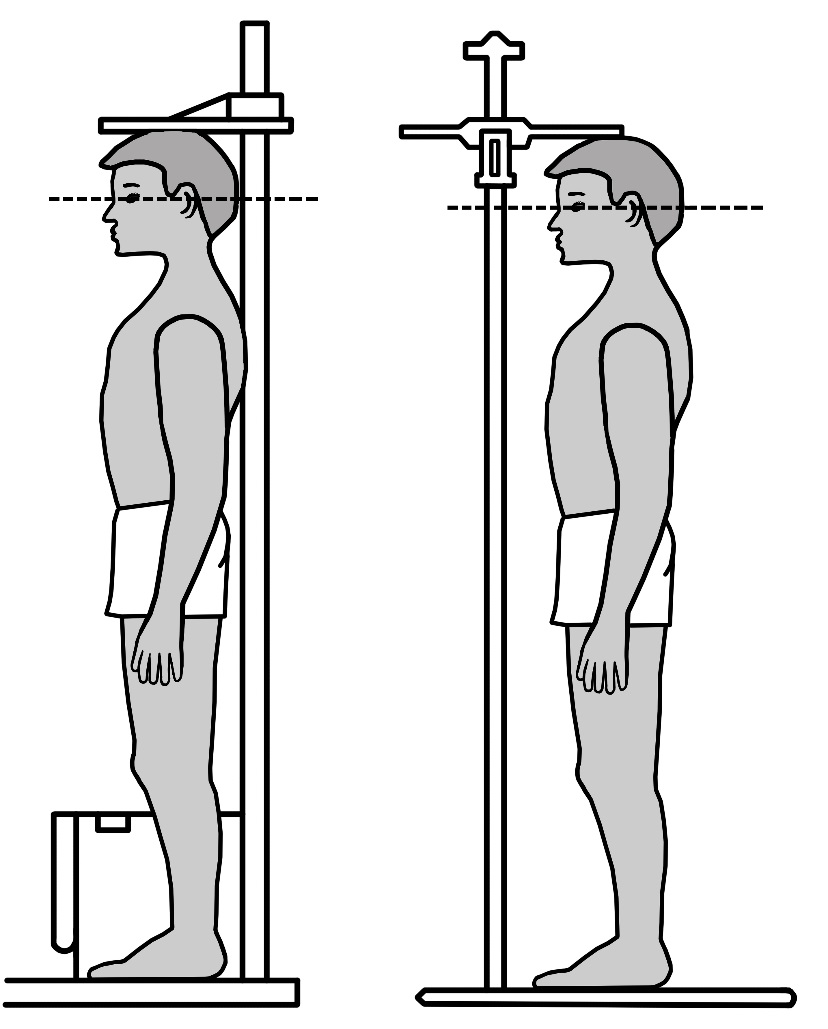 а
а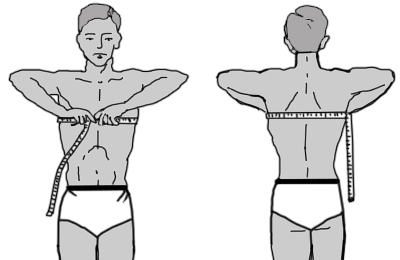
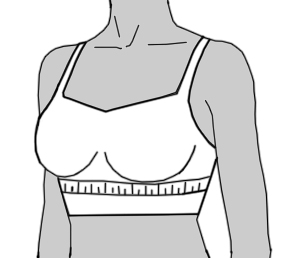
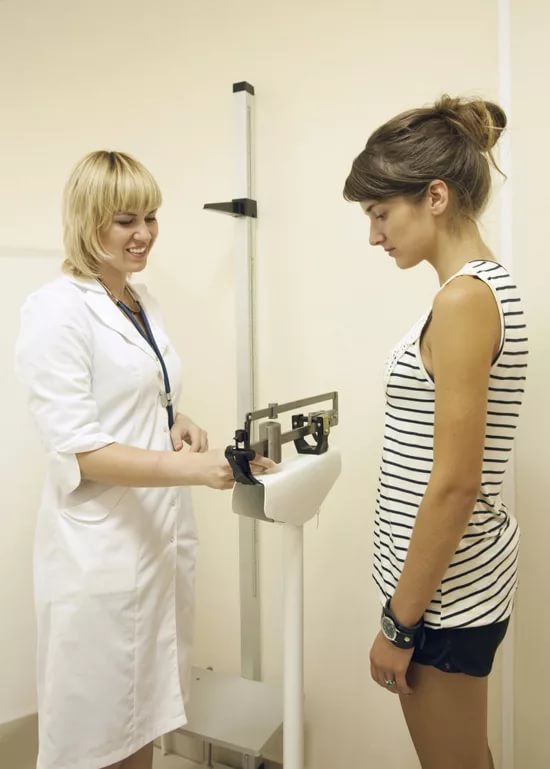 а
а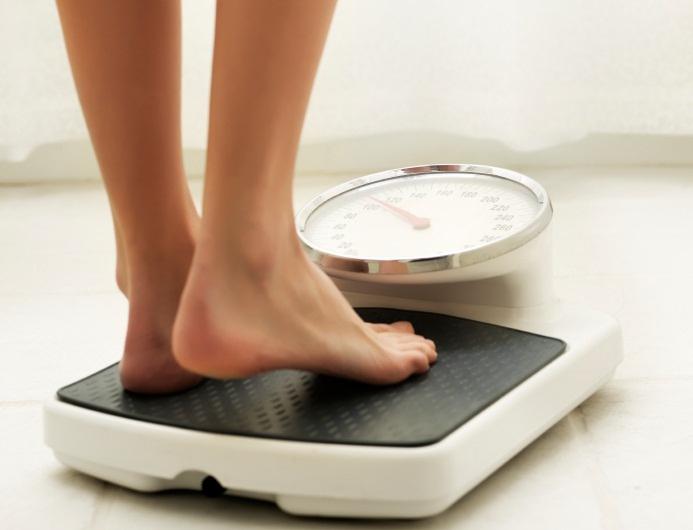 b
b